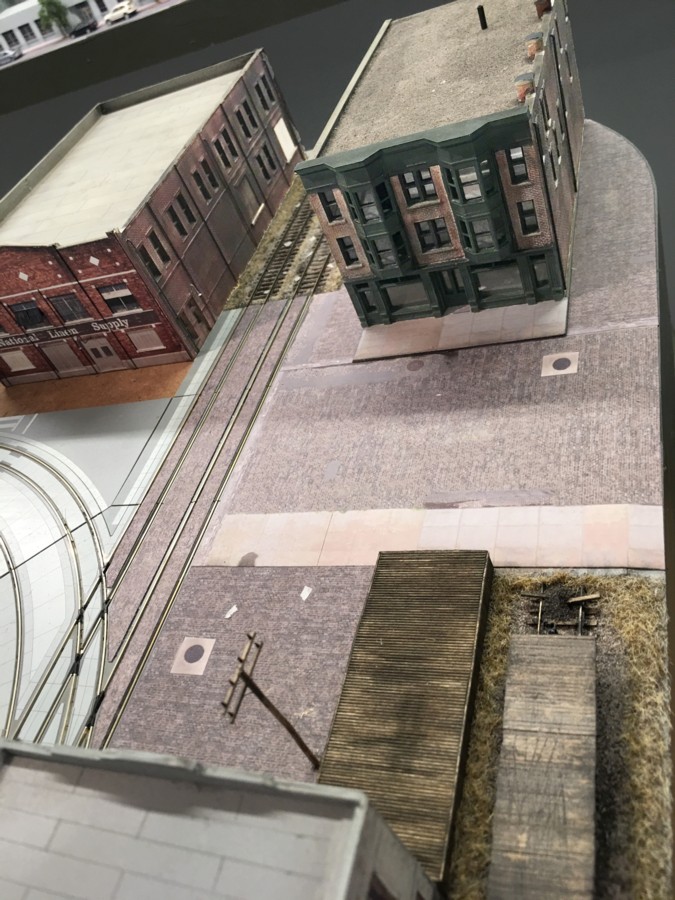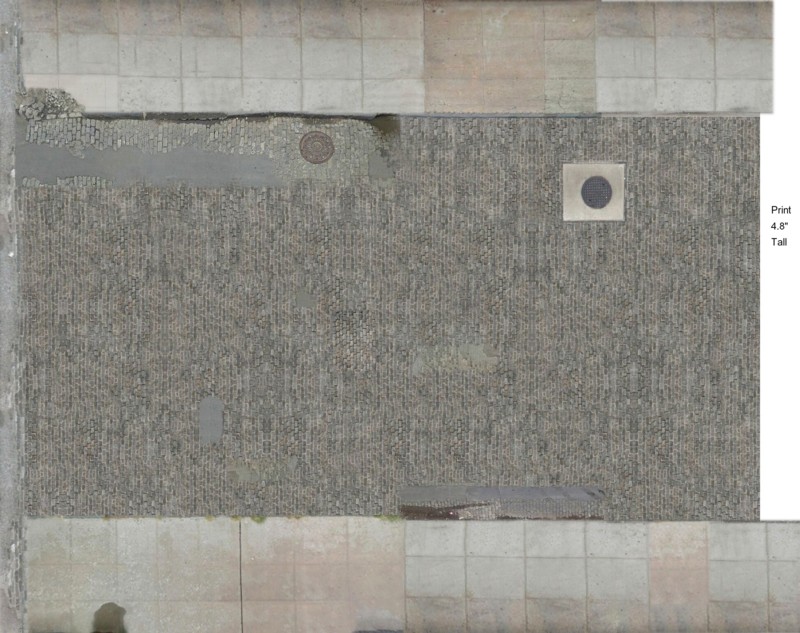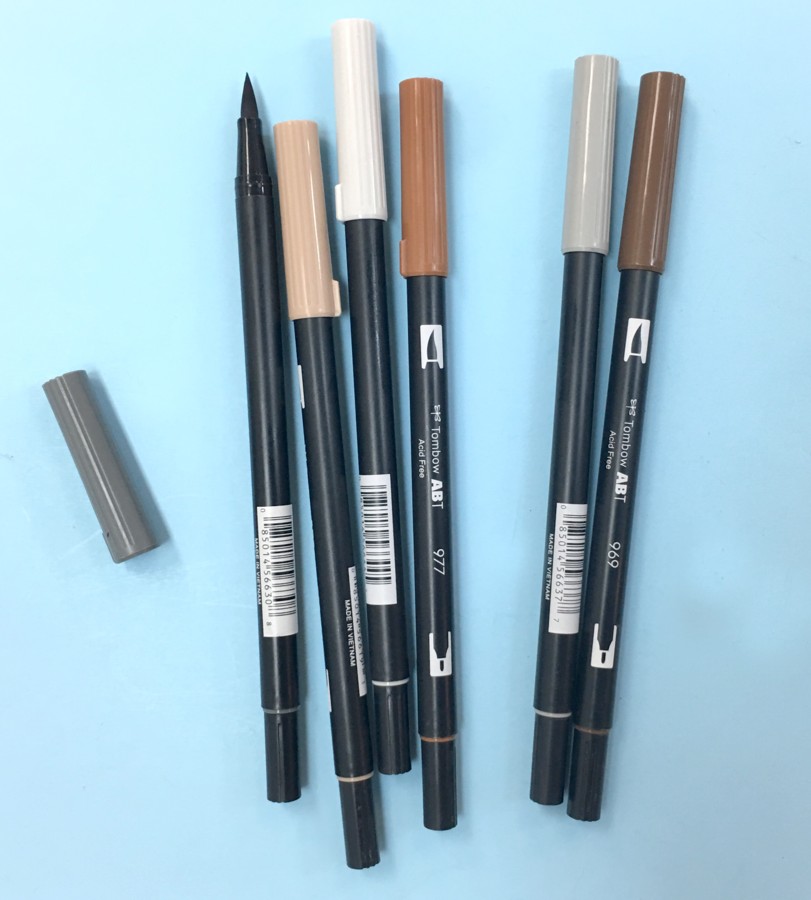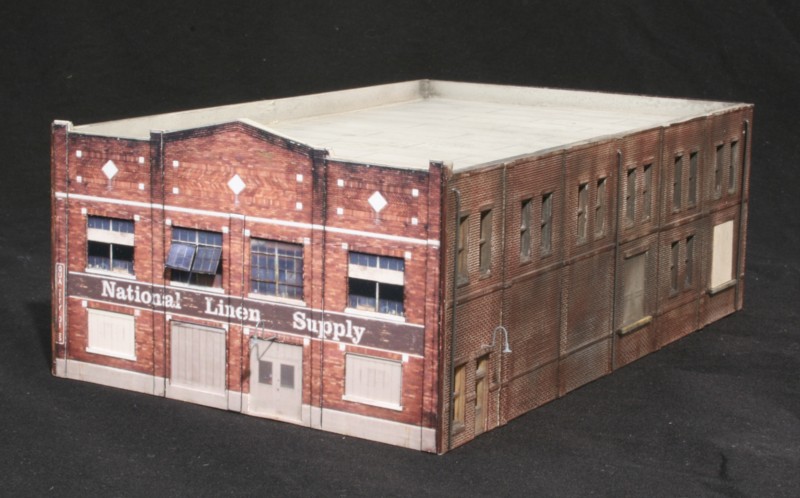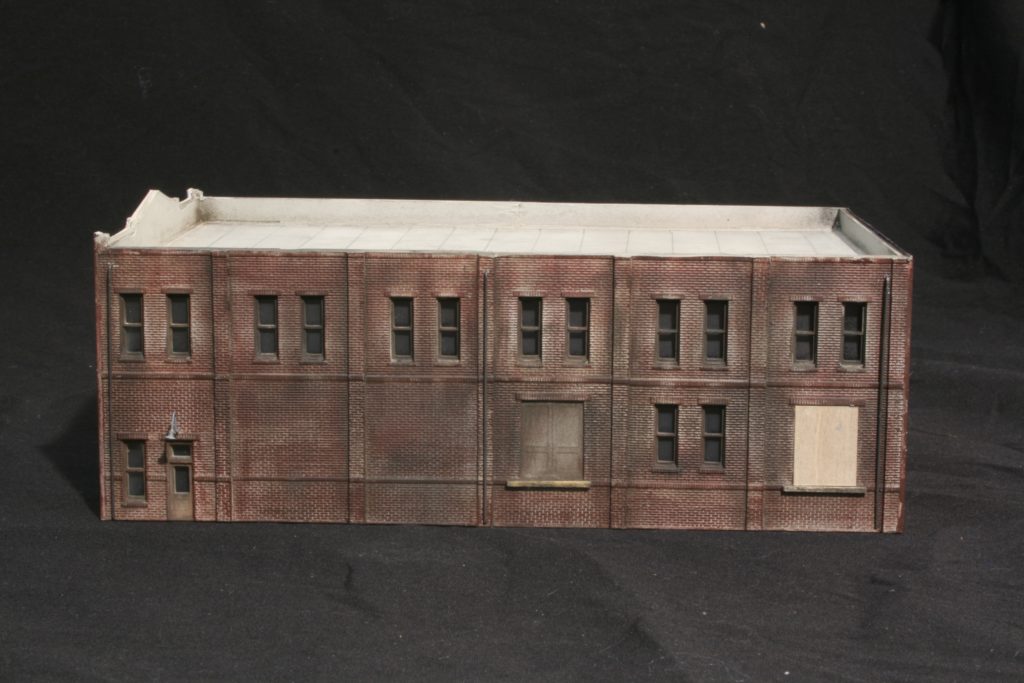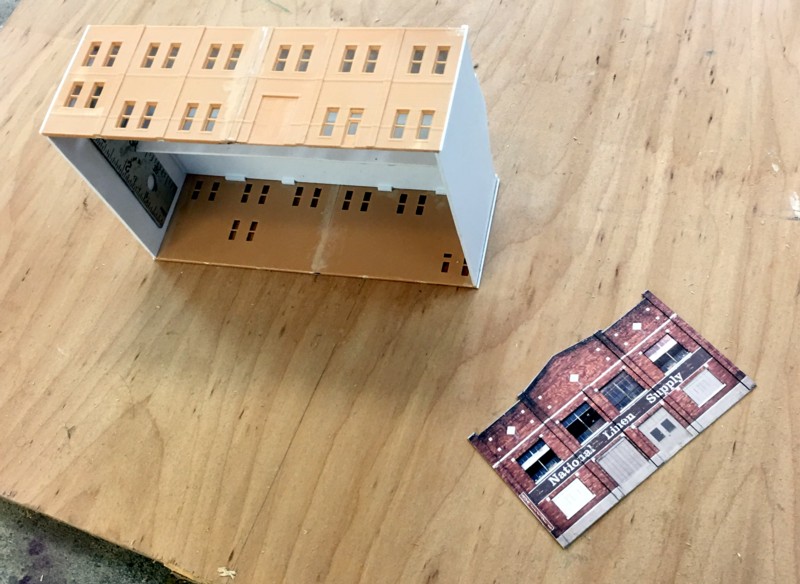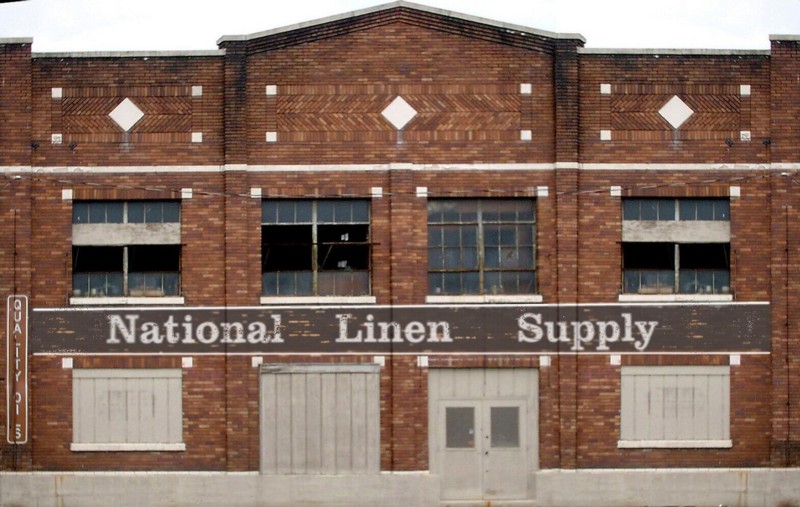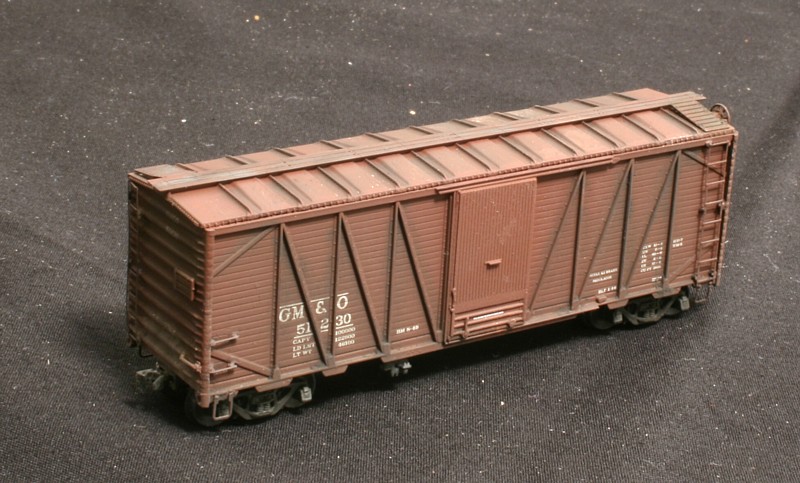One of the most distinctive and iconic features of WW2 New York was the ubiquitous Belgian Block roadways. The question becomes how to effectively model them. Even my HO scale counterparts bemoan how difficult they are to represent. Cast plaster is a major challenge and a method where it’s hard to control the results There really aren’t any styrene sheets that work and, even if there were, how do you color them? How do you cut them so they fit around turnouts?
I decided to go with the photo laminate approach as outlined in my recent article in RMC. The challenge was creating the images which took me several weeks. I did go to Brooklyn, and the paved streets are still there but you really can’t get high enough to get a great overhead shot. The only recourse was to take street level shots, correct the perspective, and laboriously stitch them together. When you use this approach, clone and copy repetitive seams and patterns really stand out so a lot of time and effort was required to make sure those patterns weren’t noticeable.
The image above is the end result. I then photo copied a turnout, cut the respective pieces out to serve as cutting templates and cut the street pieces to size.
I found these fine point earth toned color markers at Michaels to use to add color to the white edges of the photo wallpaper. They don’t wick into the photo paper as much as a Sharpie does and the fine points are a nice feature.
